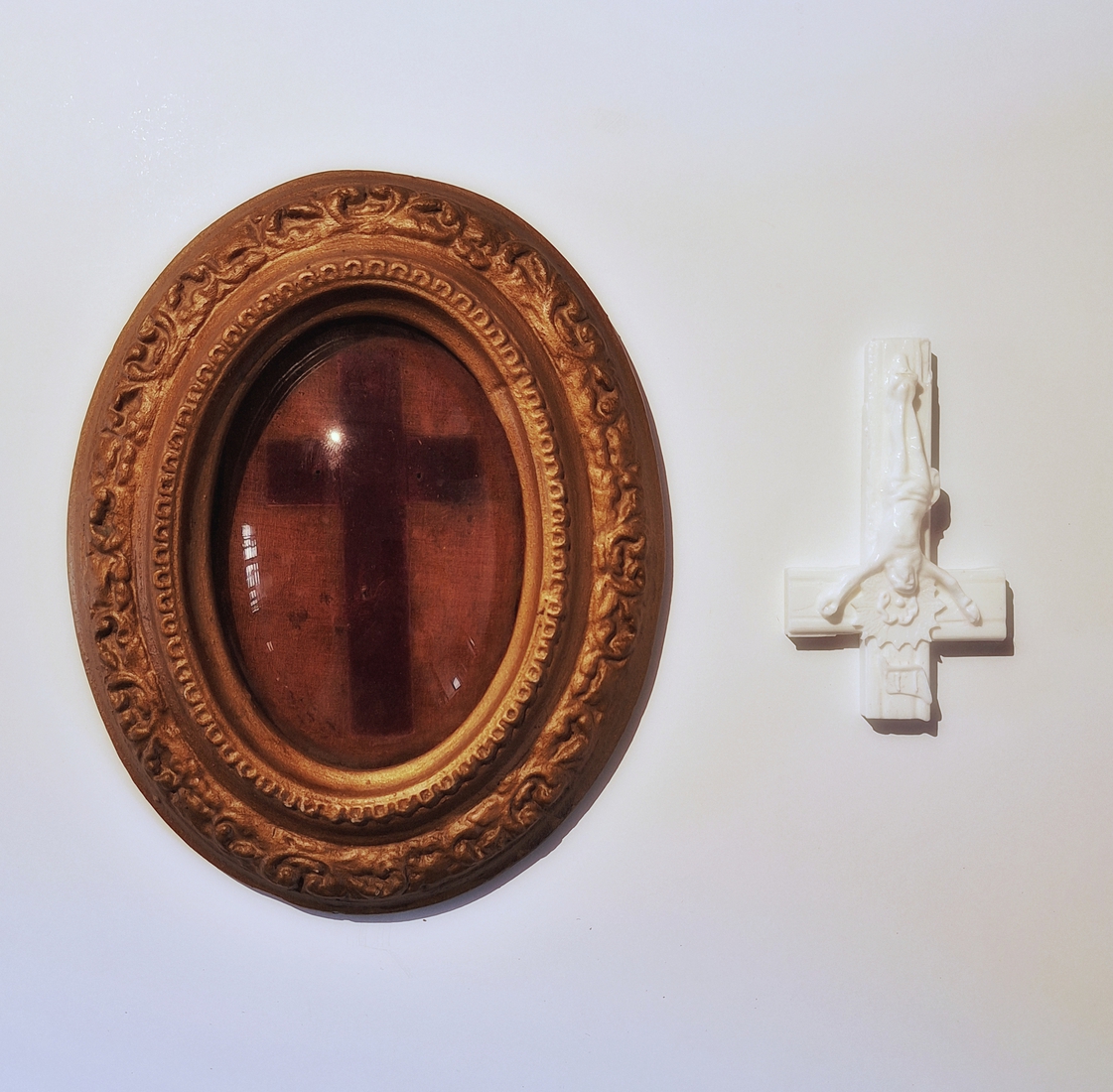Theologia Negativa explores the paradoxical relationship between presence and absence through the removal, reproduction, and inversion of a devotional object. The work begins with an antique frame containing the residual imprint of a cross. Over decades, sunlight faded the exposed textile while the area beneath the cross remained dark. When the cross was removed, its absence became more visible than its former presence—an index formed through time, light, and negation.
A photograph of the cross was used to generate an AI-based 3D model, which was subsequently 3D printed. This new object, presented inverted beside the empty frame, functions as a speculative double: a reconstruction without memory, a positive image produced from the very absence it fails to replace.
The title refers to apophatic theology—theologia negativa—a tradition in which the divine is defined not by what it is, but by what it is not. In a similar gesture, the installation does not present the cross but its trace; not the sacred object, but the impossibility of its faithful reproduction. The juxtaposition of the negative imprint and the inverted simulacrum stages a dialogue between aura and simulation, index and icon, historical decay and algorithmic fabrication. Together, they interrogate the limits of representation and the fragile ontologies of objects once charged with symbolic authority.
